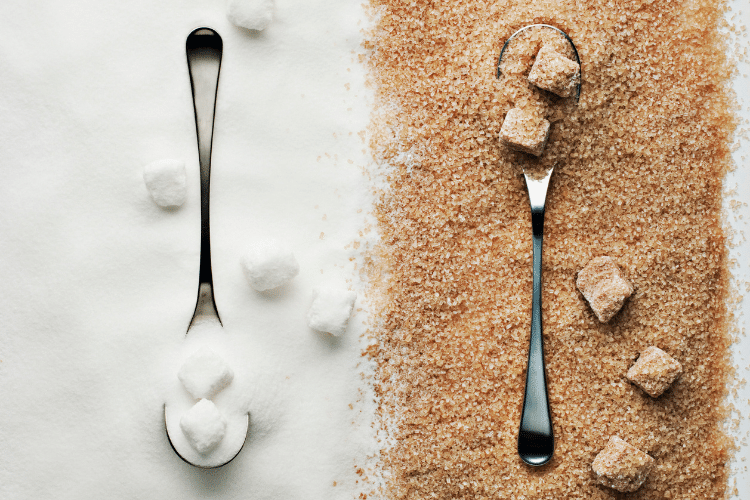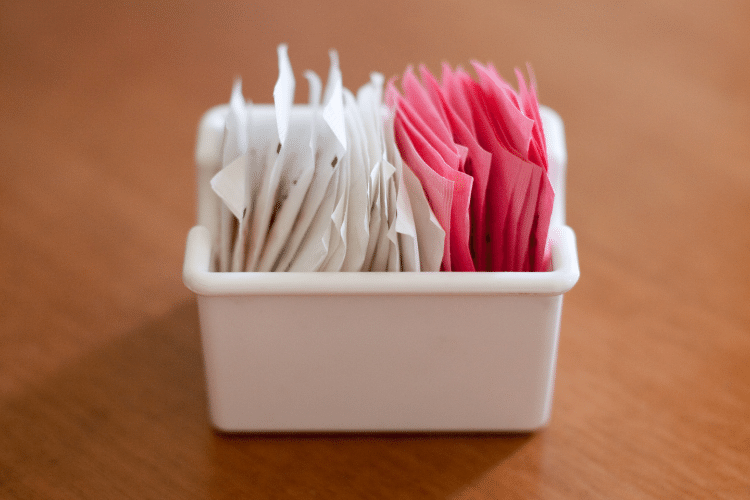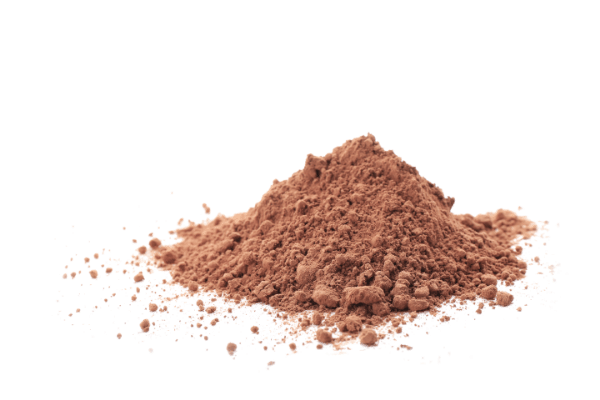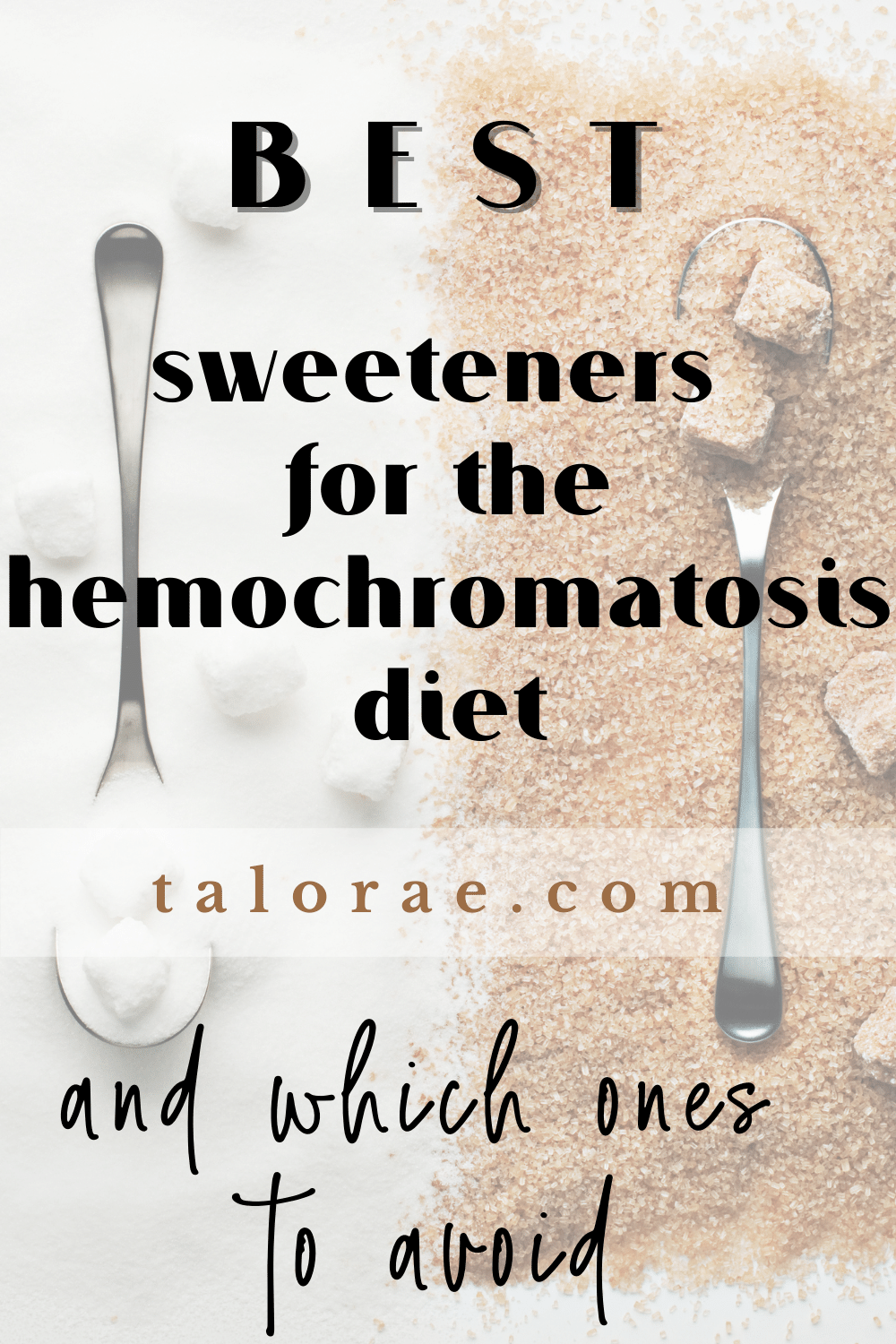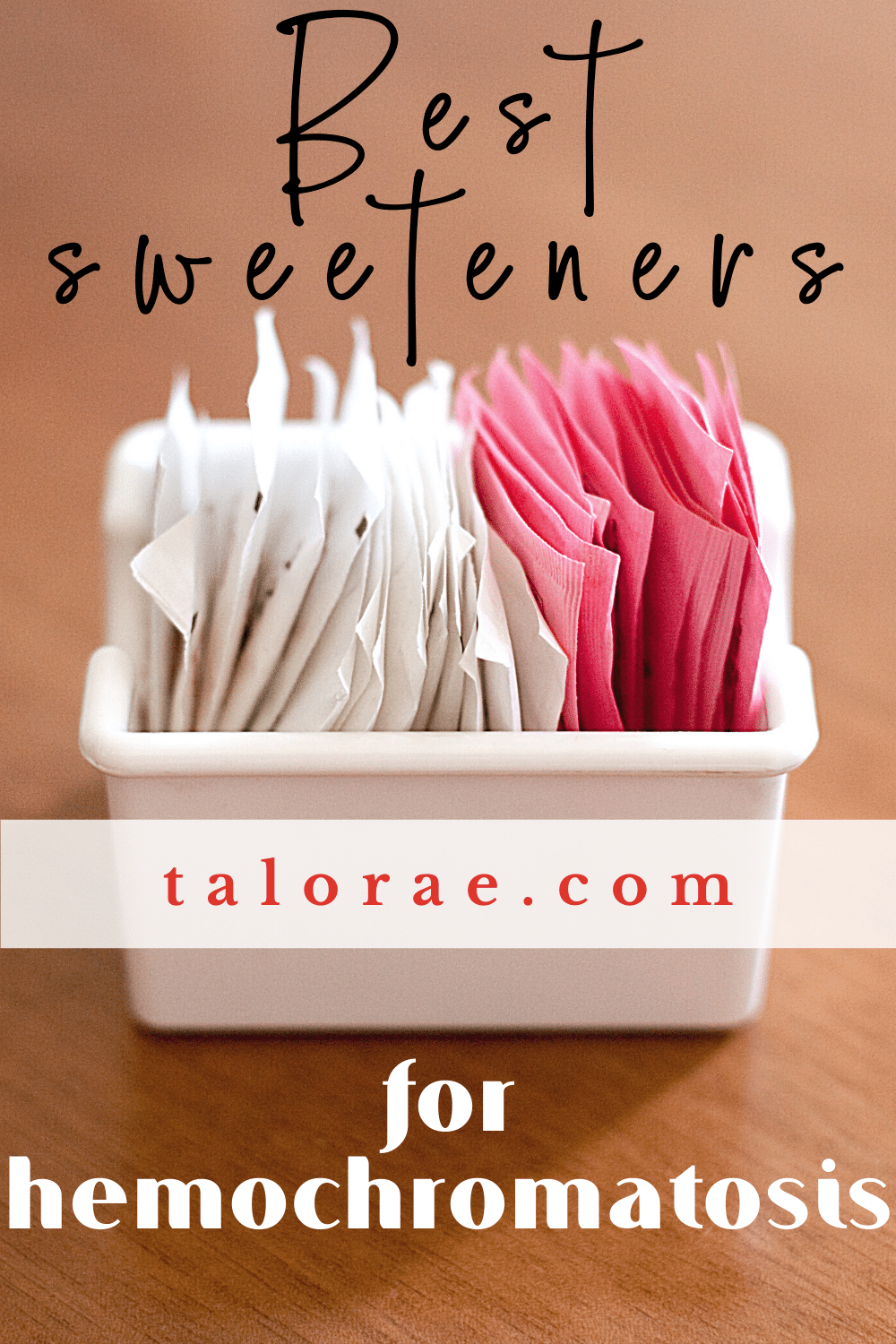Before you read on…heads up! I’m NOT a doctor or a nutritionist. I’m not giving you any medical or dietary advice here, just sharing what I like to eat. Check with your doctor before you make any changes to your diet!
Donate your…
- table sugar
- cane sugar
- powdered sugar
- brown sugar
- agave nectar
- sucanat
- high-fructose corn syrup
- honey
…to the local food bank.
They’re all high-fructose sweeteners.
Fructose causes higher iron stores.
In one study, people who took an iron supplement in combination with fructose had up to three times higher iron stores than those who took the same supplement without fructose, according to the Iron Disorders Institute.
Fructose actually changes the structure of iron molecules, making them more bioavailable, meaning they’re easier to absorb.
Accordingly, hemochromatosis organizations like The Iron Disorders Institute and The Haemochromatosis Society and medical institutions like The University of Virginia strongly advise against consuming soda and store-bought sweets like candy and cookies because they contain high amounts of fructose – most commonly in the form of sugar or high-fructose corn syrup.
You’ll also want to stay away from:
- blackstrap molasses
- jaggery (aka SugaVida)
- sorbitol
- sucralose (aka Splenda)
- aspartame (what’s found in most “diet” sodas)
Even though both blackstrap molasses and jaggery may be lower in fructose, they are high in iron.
And sorbitol – a common sugar substitute commonly found in “sugar free” foods like chewing gum, sugar free pudding and cookies – is linked to higher iron levels.
Sucralose and aspartame, also abundant in diet and lite food products, both have way too much research showing potential negative effects on health – with gut issues, ties to cancer, and disruptions to metabolism being just a few – that many nutritionists don’t consider them healthy or safe.
Instead, start experimenting with these alternatives:
STEVIA
A zero-fructose and zero-calorie sweetener, stevia is actually derived from the leaves of a plant. No studies as of yet have demonstrated that stevia enhances iron absorption. The best form of stevia to purchase is whole or powdered green stevia leaves, since the liquids and white powders are ultra processed and contain additives like sugar alcohol. Stevia leaves are 200x sweeter than sugar, so a little goes a long way. Heads up – stevia does have a slightly bitter aftertaste. I don’t mind it, but some people don’t enjoy stevia for this reason.
Try Mayan Sweet Whole Stevia Leaves and Stevia Leaf Powder Sachets.
MONK FRUIT EXTRACT
Monk fruit is a melon-like fruit grown in southeast Asia. People from that region have traditionally dried the fruit and used it as a sweetener (it’s 150-200x sweeter than sugar). Interestingly, the extract from the fruit does not contain any sugar or fructose, a perk for those of us with hemochromatosis. While monk fruit itself contains vitamin C, the extract is NOT a source of vitamin C or any other iron-boosting ingredients. And unlike a lot of other sweeteners, studies so far haven’t shown any negative health consequences of using monk fruit extract. It’s VERY sweet, so you only need a pinch!
Try NOW Monk Fruit Extract Powder.
YACON
A sweet tuber from South America that’s been stocked in health food stores for decades, yacon has more recently become trendy due to its low-calorie, low glycemic-index appeal. Despite yacon’s sweetness (it’s been compared to an apple, a sweet potato, and a fig), it contains far less fructose than sugar. Here’s what’s really exciting about yacon: One study on children found that yacon “has no impact on iron status.” While the study hasn’t been repeated on adults, it seems that we may be able to safely consume yacon without any increase whatsoever on our iron levels. Another promising study on rats found that yacon may have a protective effect on the liver health of rats with iron overload. Needless to say, yacon might be the most promising sweetener for hemochromatosis yet! You can get yacon in two forms – either as yacon syrup or yacon powder. Keep in mind that yacon has a much milder sweetness than sugar and a flavor that may require some getting used to.
Try Swanson Yacon Syrup and AKI Organic Yacon Root Powder.
BROWN RICE SYRUP
Shira Lenchewski M.S., R.D says, “Brown rice syrup is a thick, gooey sweetener made from fermented cooked brown rice. While it’s typically made from natural ingredients, it is highly processed. On the plus side, brown rice syrup doesn’t contain fructose. Because of its unique stickiness, it can be texturally desirable for specific recipes like nut and seed bars.” Due to the fact that brown rice syrup is all glucose (no fructose at all), it’s a good fit for hemochromatosis. While human studies are limited, it appears that glucose does not increase iron absorption the way that fructose does. Brown rice syrup is a slightly malty crowd-pleasing syrup that most people like the taste of.
Try Lundberg Sweet Dreams Brown Rice Syrup.
MAPLE SYRUP
While maple syrup DOES contain fructose, it’s got less fructose than sugar, honey, agave, and many other sweeteners. With a handful of nourishing minerals, especially manganese and zinc, maple syrup is a fine choice every now and then. Try to moderate how much you use to limit your fructose intake.
COCONUT SUGAR
Similar to maple syrup, you WILL find fructose in coconut sugar, but less fructose than you’d find in white or brown sugar, honey, agave, and many other sweeteners. Coconut sugar also provides nutrients in small amounts (like fiber) and it retains some antioxidant capacity. Like maple syrup, coconut sugar is a sensible choice if there aren’t better options available to you, or every once in a while. Due to the fructose content, it’s important that you don’t go overboard.
Try Big Tree Farms Brown Coconut Sugar.
NO SWEETENER IS PERFECT
At the end of the day, nutritionists would agree that no sweetener is free from downsides or negative side effects.
For example, both stevia and monk fruit extract are zero calorie sweeteners, but have been shown to make you hungrier than you actually are. Their sweetness makes you crave the calories you would have gotten if you had eaten real sugar.
Brown rice syrup, while potentially useful for keeping iron absorption low due to its zero fructose content, is full of empty calories due to its lack of nutritional value. Many nutritionists warn that this syrup is lacking in health benefits and should be used sparingly to avoid putting on inches around the waistline.
Yacon syrup has sugars that do not get absorbed by the gut – while this is helpful for minimizing iron uptake, it can cause discomfort in people with underlying digestive problems. So if you’re already prone to intestinal pain, acid reflux, indigestion, or other gut issues like irritable bowel syndrome, yacon could potentially aggravate those issues for you.
Maple syrup and coconut sugar DO contain fructose and therefore they won’t do anything to lower your iron absorption – in fact they’ll increase absorption unless you pair them with “iron-fighting” ingredients, which isn’t ideal. But remember – they’re still better choices than higher fructose sweeteners that would make you store away even greater amounts of iron.
No sweetener is perfect, and there are consequences to using any and all sweeteners and sugar substitutes.
But…we’re only human!
It’s inevitable that we’re going to want something every now and then to satisfy our sweet cravings. By cutting out the very worst sugars, syrups, extracts, and chemical sweeteners for hemochromatosis, and using these “better” sweeteners in their place, we’re taking a step towards better health.
Whichever sweeteners you choose to use – remember never too much, never too often. While it can feel challenging as you adjust to a less sugary diet than you’re used to, it’s worth it for your health!
P.S. ANOTHER FUN IDEA!
Consider adding a little bit of pure vanilla powder or cacao powder to add a pop of flavor to foods and to appease your sweet tooth.
Vanilla and cacao aren’t technically sweeteners, but they do enhance taste and aroma with the benefit of no added sugar or fructose.
Both vanilla and cacao are packed with polyphenols and antioxidants, making them a healthy choice for hemochromatosis. Sprinkle a small amount on toast and cereal, or stir in a spoonful with your smoothies and desserts.
Try Native Vanilla Bean Powder.
Bon appetit!
The views expressed in this post are for informational purposes only. This post is not, nor is it intended to be, a substitute for professional, medical, or nutritional advice, diagnosis, or treatment, and should never be relied upon for professional, medical or nutritional advice, diagnosis, or treatment.
No content on talorae.com, including but not limited to pictures, graphics, videos, and text, may be republished or distributed, for financial gain or not, without my written permission.
As an Amazon Associate I earn from qualifying purchases. The above content may contain affiliate links, meaning I do get a commission when you make a purchase through those links. There is no additional cost to you. Please read my disclaimer for more info.
